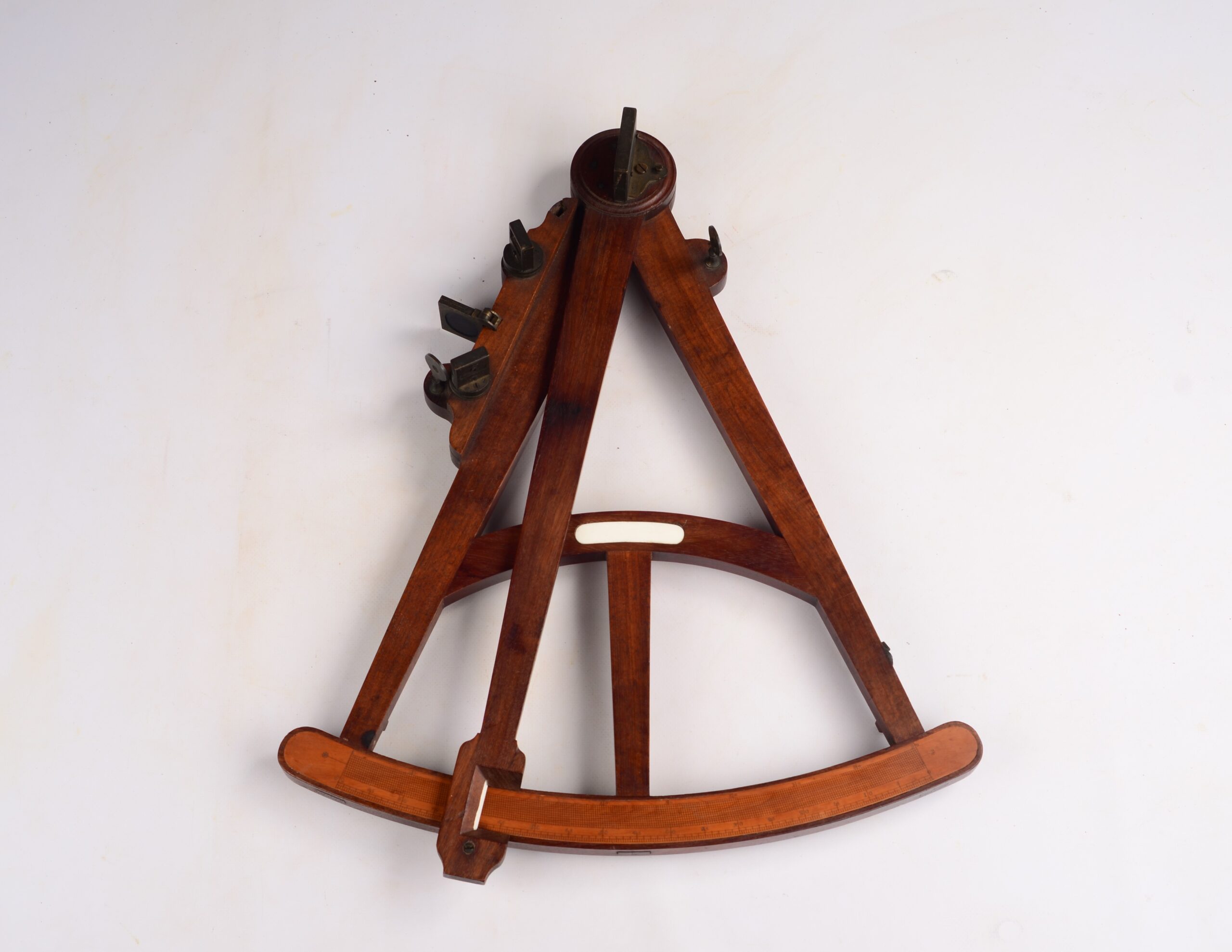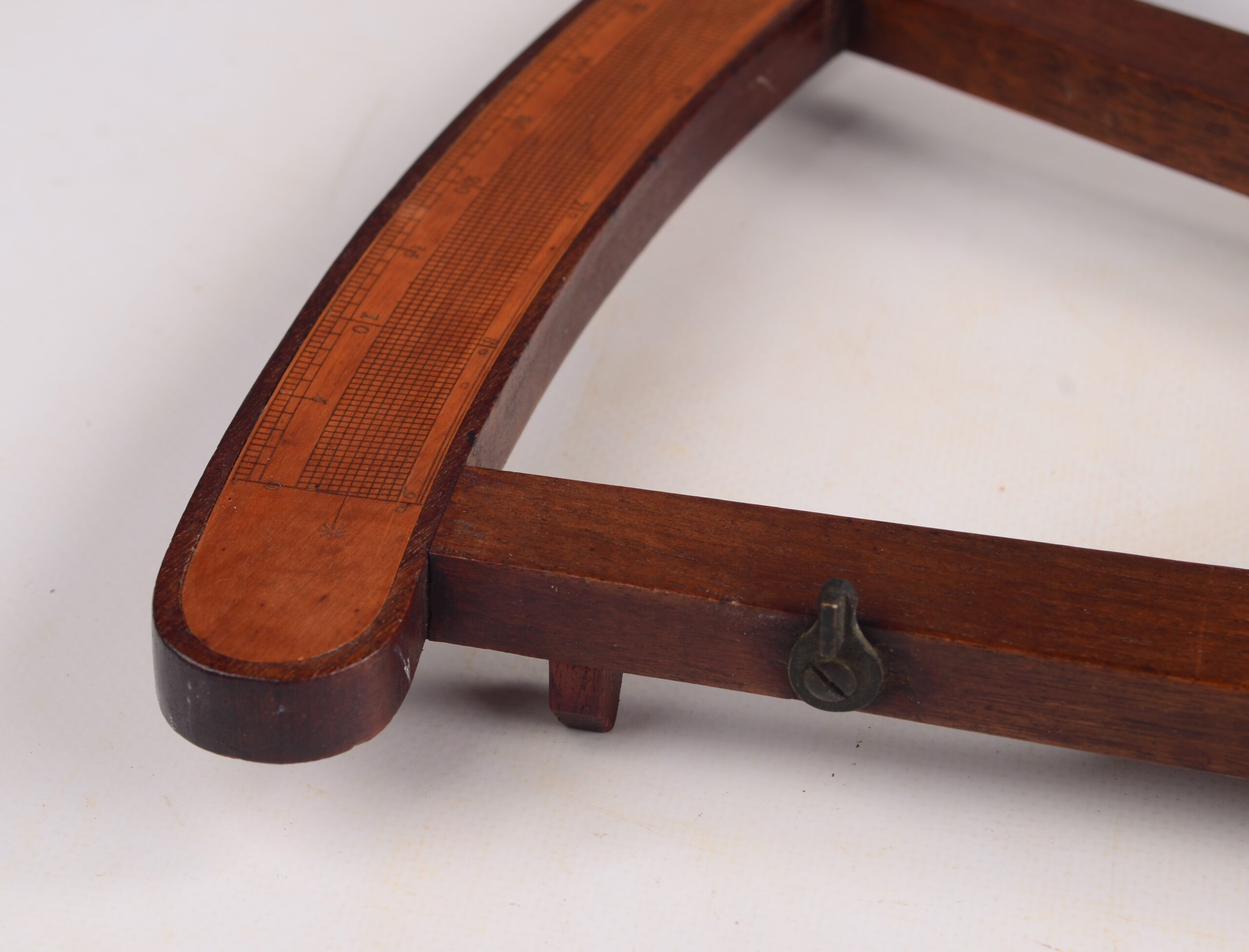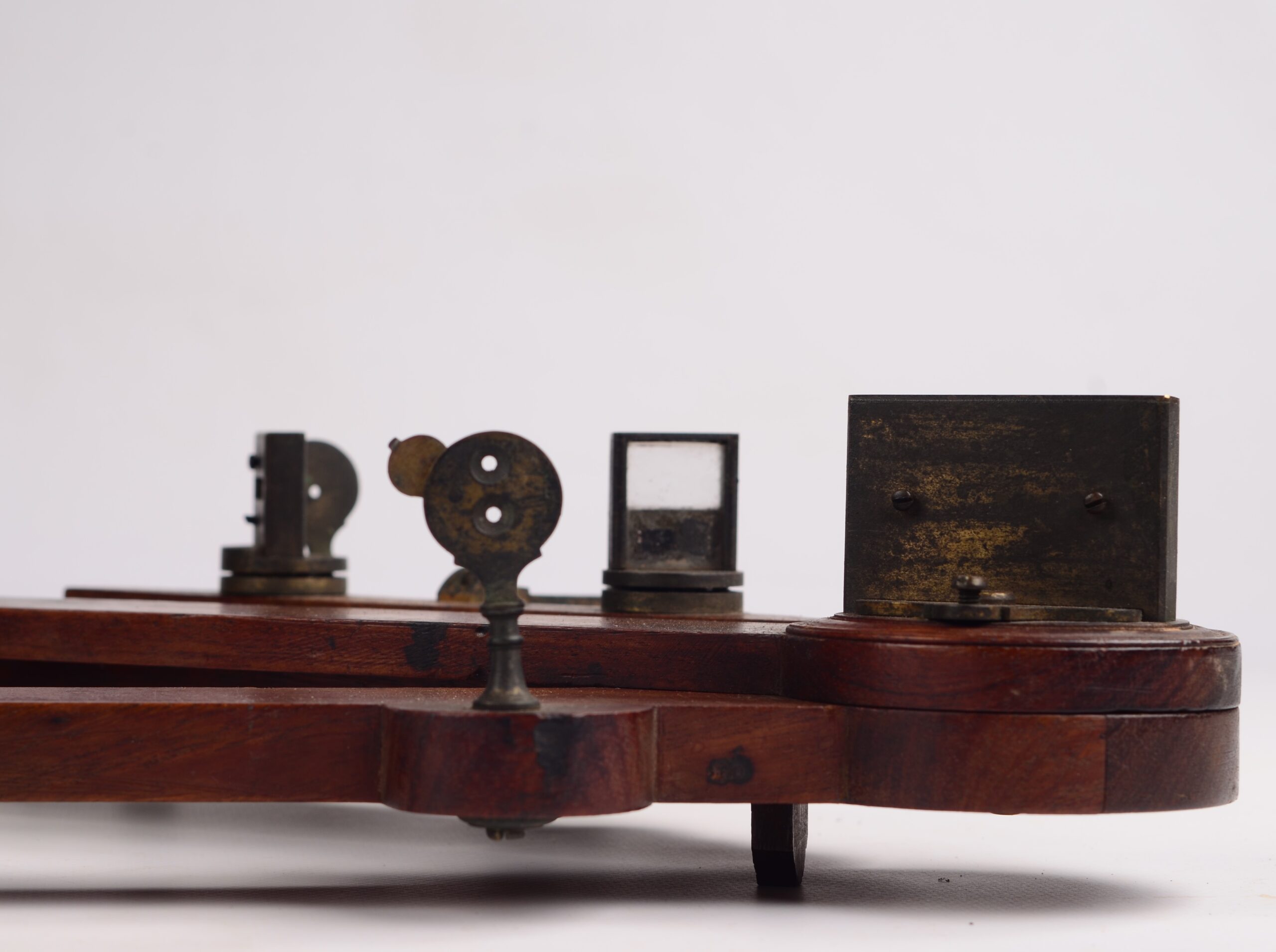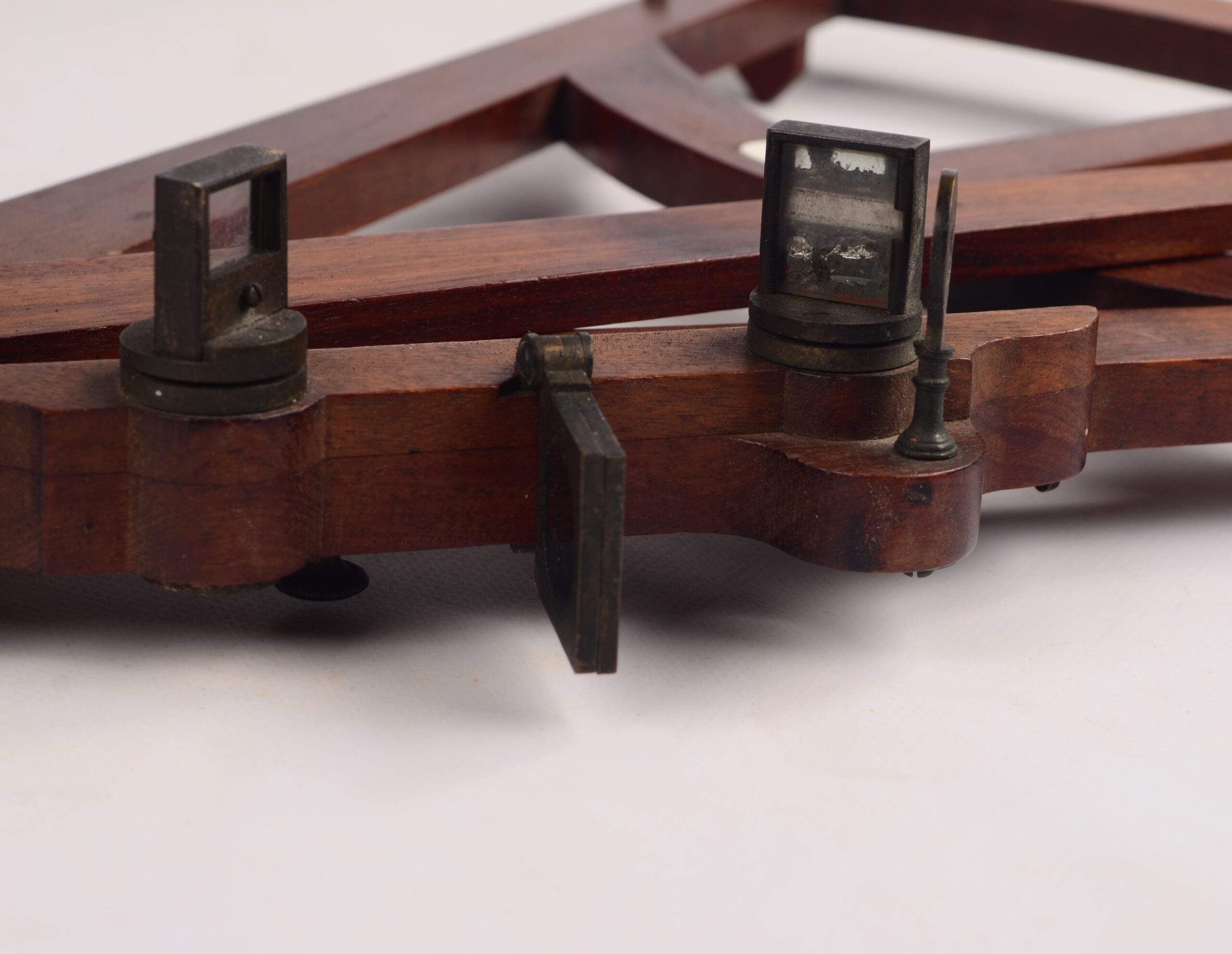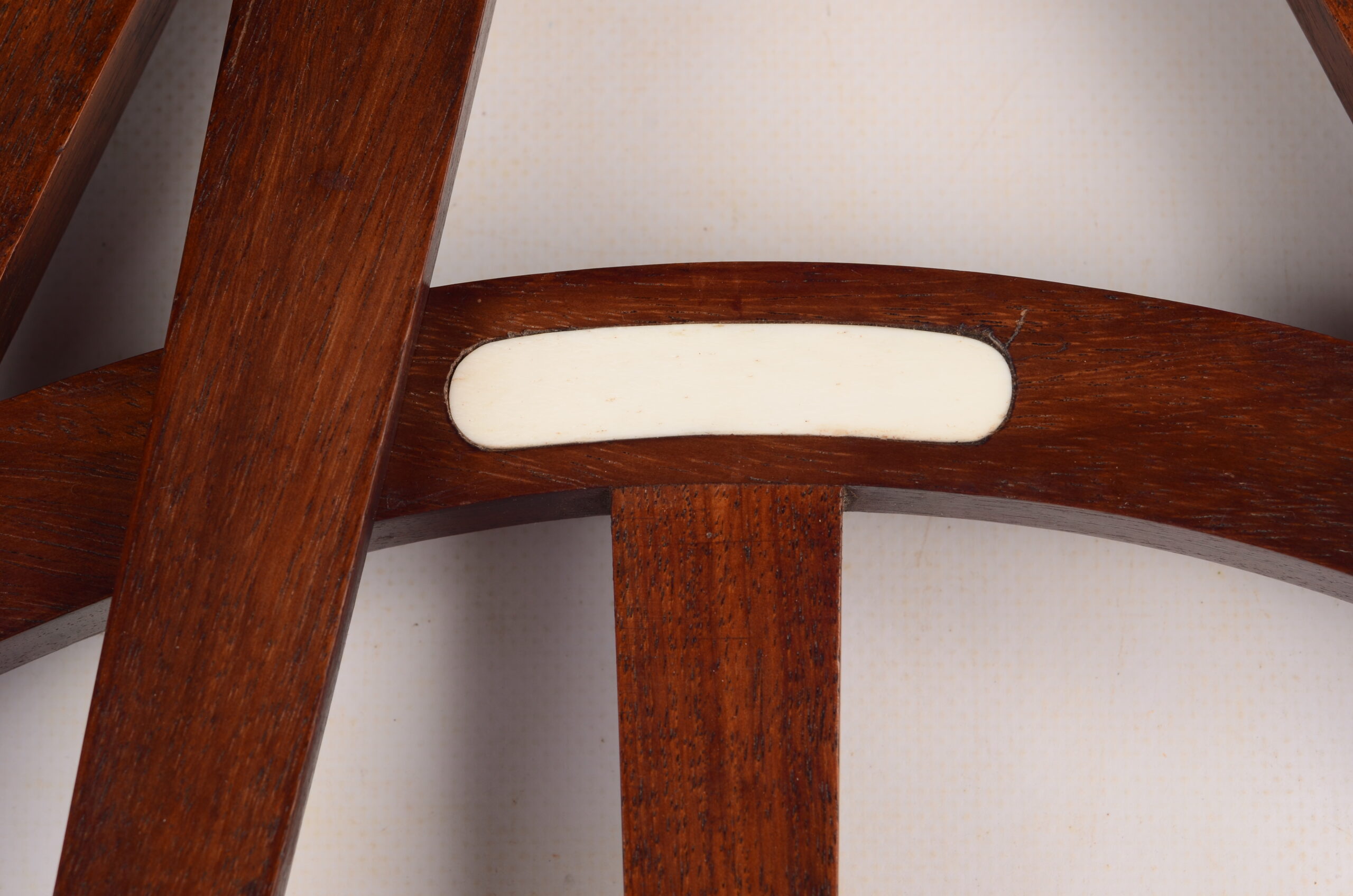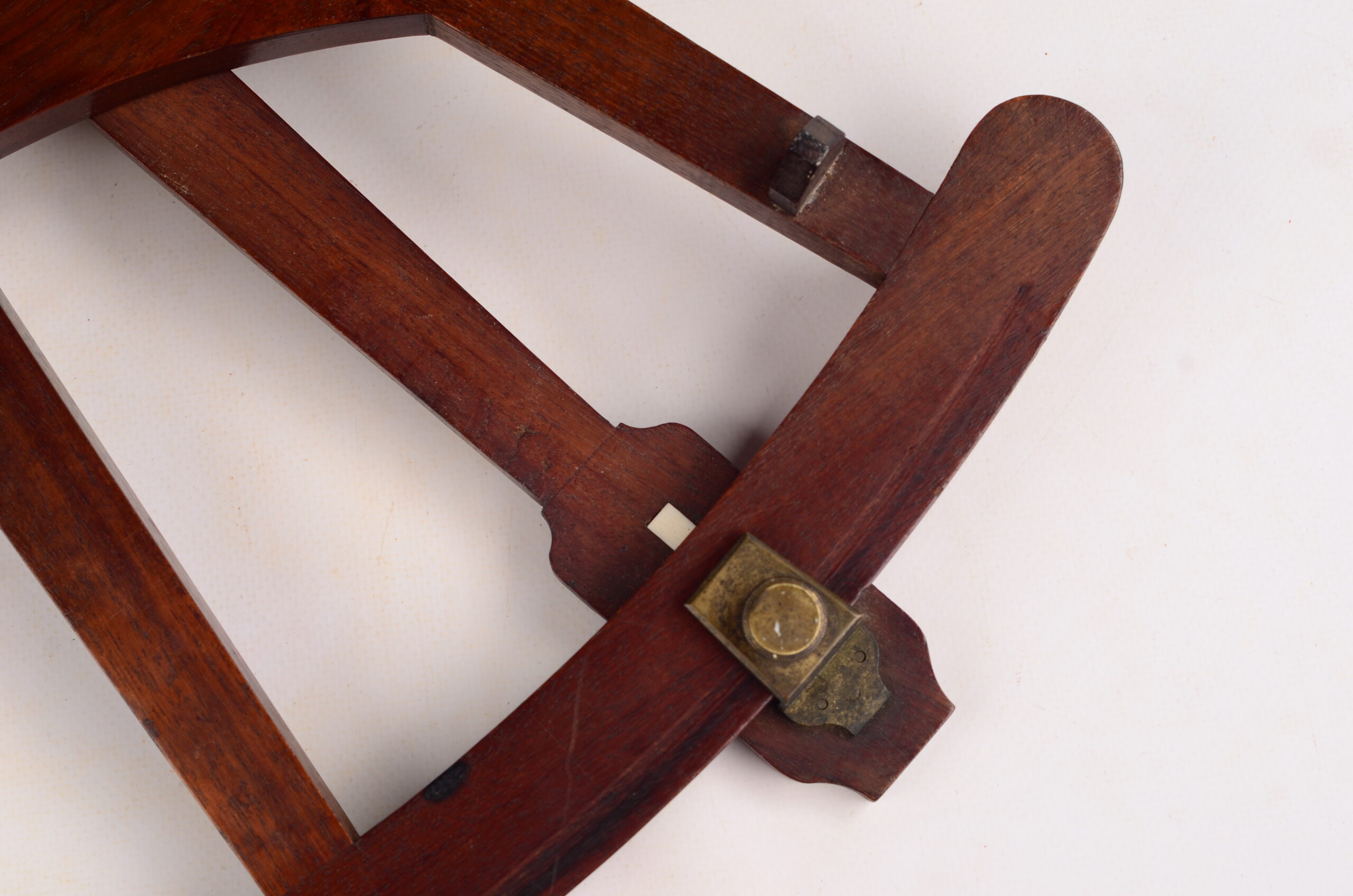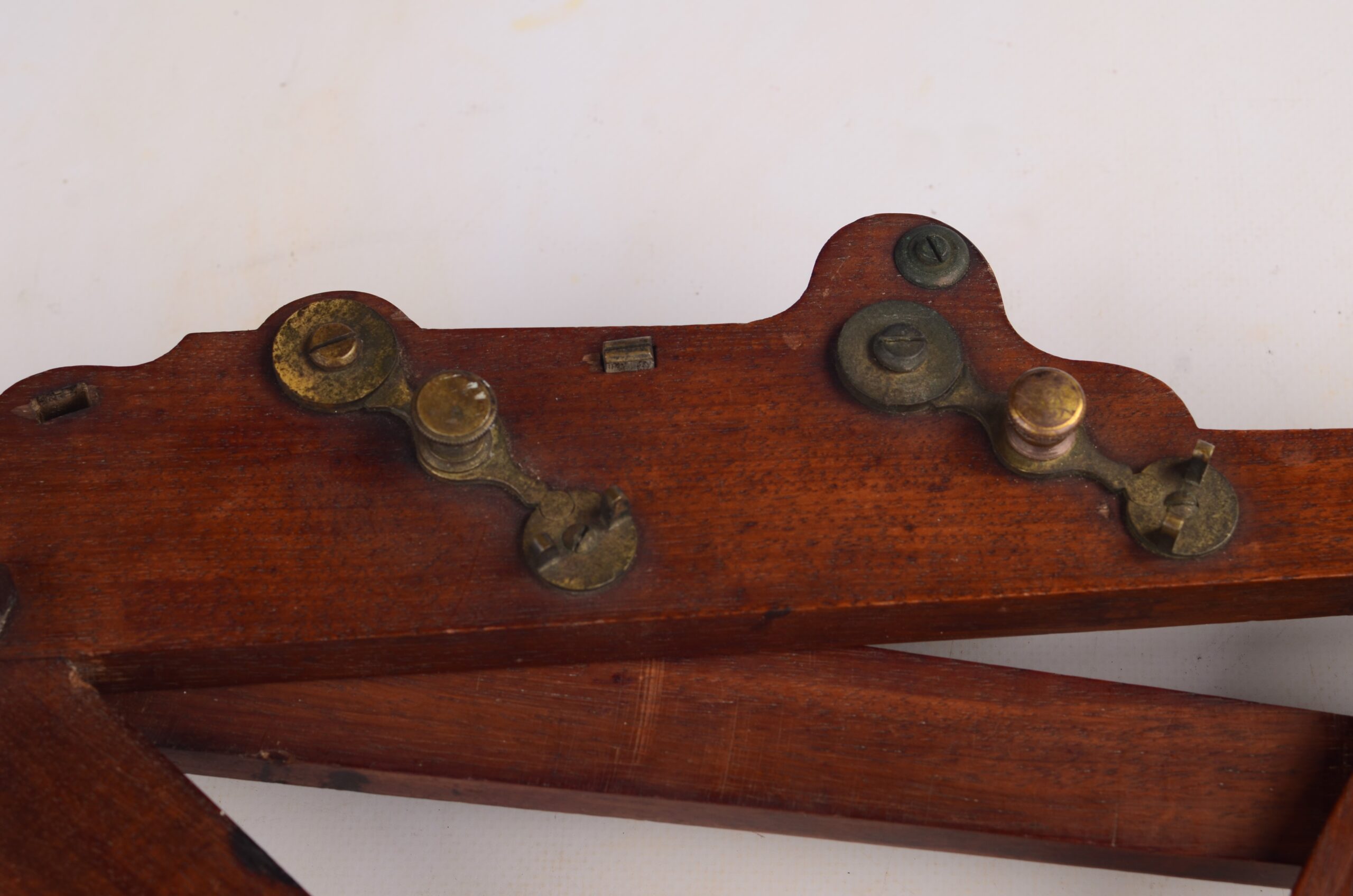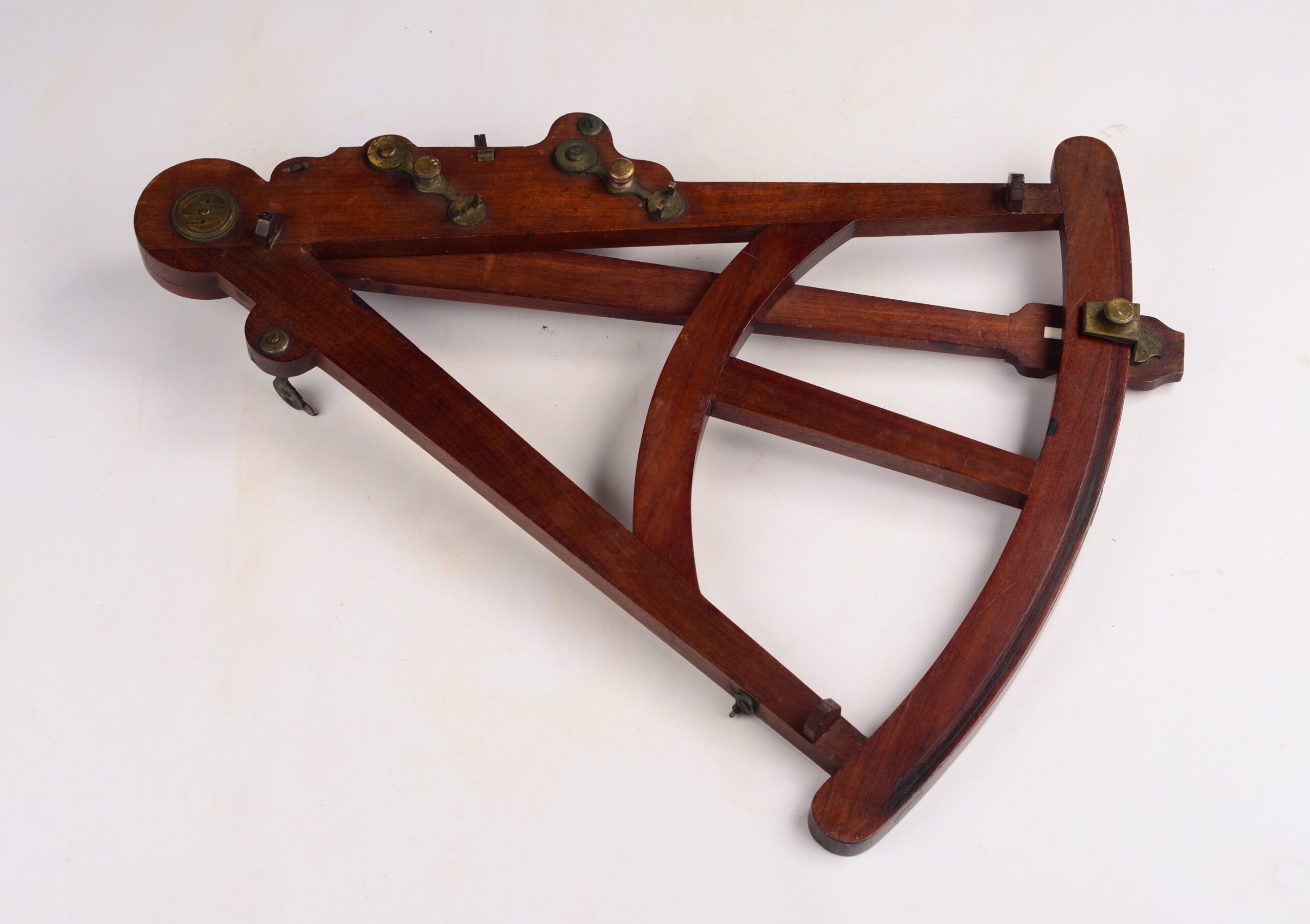
Complete and early 21-inch Hadley’s Quadrant (octant) – around 1750
The first octant was created by John Hadley in 1731. In Great Britain and North America it was called the Hadley’s quadrant to distinguish it from the Davis Quadrant. The early octants of Hadley are provided with a transversal nonius, like the Davis Quadrant. Headly got a patent for eleven years in 1734. Immediately after it came to an end and other instrument makers started with making octants. Later copies feature a Vernier nonius, invented by the Frenchman Vernier.
This particular complete instrument is made of very fine Cuba mahogany and hardly used. It dates around 1740. The transversal scale is made of palm wood. The scale can be read very accurately by means of an bone insert in the alhidade. On the graduation every degree is divided in parts of 20 minutes. The nonius is divided in ten equal parts, so the accuracy of reading with the transversal nonius is two minutes. Can also be used for backward observation. The nameplate is made of bone. At the backside the instrument has wooden feet. The two movable sunshades can easily fall overboard or get lost. Interesting is the second peephole with sliding cover plate, in the eye visor as an alternative to the sun glasses. It is slightly outside the beam path of the instrument, which caused the sunlight to be somewhat weakened.
Catalogue: NM.7-04
Date: 1740
HW instrument: 52 x 41.5 cm
Radius (rotation axis till nonius): 43 cm
Signed: not signed
Origin: unknown
Condition: very good for its age with some general signs of use and wear


